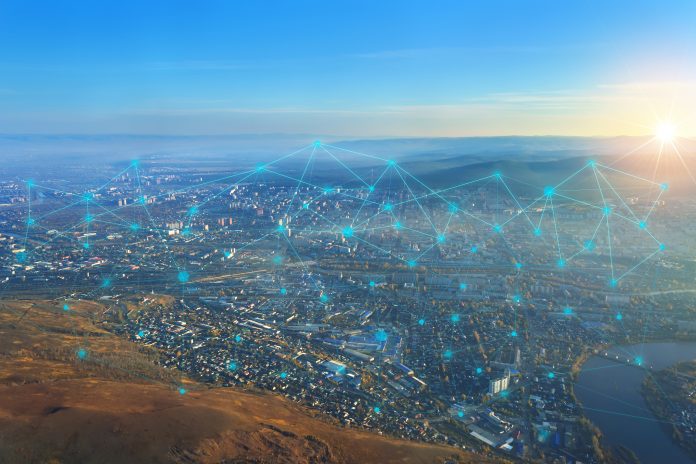Ceri-Ann Droog, global digital director at Atkins, examines the benefits of data for your planning, construction design, decommissioning strategy and more
Our industry is ripe for transformation and proven, emerging technologies are creating huge opportunities for us all to improve our performance. The true value lies in our data and our ability to harness it across the end-to-end project lifecycle to deliver better outcomes for clients and throughout the supply chain.
Through data, we can connect people and technology to be the source of real-time insight, continually elevating decision-making, providing more on-site certainty, increasing industry productivity and improving commercial outcomes for all involved. However, to be successful, we must keep evolving our processes and ways of working with data, putting proper data management at the heart of our strategies to unlock and create the maximum possible sustainable value.
It’s easy to talk about the value of data but what does that really mean in reality? To answer that, we must look across the lifecycle of an asset, from planning right through to your decommissioning strategy, and how data can enrich our outcomes at every step.
How can we use data in planning?
Spatial data needs to be at the heart of projects, starting in the planning stage and continuing through to design, construction and operation of assets. The designs we create must be understood and analysed alongside environmental data, survey data, utilities, topography and socio-economic information, to name but a few. Although this can result in the creation of thousands of layers of spatial data, if teams have data siloes, projects become disjointed, slowing the programme and requiring additional time and cost for rework.
Project teams need a single source of truth; a digital platform to explore, analyse, manage and share all forms of location data. Whether you’re an ecologist wanting to access land ownership data for survey planning, a civil engineer streaming environmental constraints into your design software or a geotechnical professional examining the proximity of proposed boreholes to the latest design refresh, everyone should have the location data they need at their fingertips. And it’s not just about data access but analytics too. Analysis tools and intuitive dashboards that can aid outputs from scheme design, net zero and social value to visual impact and heritage.
Using data for project management
Traditionally, project managers have gauged delivery progress by asking technical delivery teams to provide updates on a periodic basis. This process is subjective, highly manual and open to the risk of human error. It also introduces a significant reporting burden to the team. But by making better use of the data that is produced during project delivery, project managers can generate far better insights into the state of progress, allowing them to manage projects better and inform clients and partners more accurately. Harnessing high-quality, structured data provides an unparalleled view into how projects are being run, enabling teams to continuously refine and improve their delivery model.
Connecting design and construction with data
Finding smarter ways to use data to connect design and construction is critical, as our industry often struggles at the interface between these two phases. Designers often make decisions in isolation from construction, focusing on a short-term resourcing cost or issue, for example, without considering the impact onsite, which can be an order of magnitude larger and have repercussions of far greater commercial value.
There is therefore huge potential for increased value by synchronising how contractors and designers collaborate across this boundary. By harnessing historic data, machine learning, simulation, pattern detection and prediction, we can deliver valuable insights at pace, shortening the flash to bang of keeping projects on track.
This will give planners a whole range of options for solving resource bottlenecks, generating millions of options, as opposed to the five or six we might have today. It will also arm teams with an understanding of the time it will take to construct, the cost and the carbon impacts for solutions being developed, as they’re being developed. This can avoid costly value re-engineering that we see happening time and time again across our industry.
By helping PMOs make decisions earlier, faster and with more confidence, using data, we can improve time costs and accountability outcomes across our sector.
Digital twins can help reduce wasted resources in operations and maintenance
Digital twins can help us reduce wasted resources in operations and maintenance because people can see and discuss a digital representation of the infrastructure, the problem and how to solve it before an engineer ever even physically visits the site.
Digital twins have the potential to unlock whole life value because you can run the model forward in time to spot opportunities and problems before they happen. They also enable real-time monitoring of performance and are an essential technology for building smart cities too.
Take the creation of the Greater London Area Planning Data Hub, a digital twin that provides near real-time planning data, open and accessible, to the 36 planning authorities in Greater London. This pivotal project demonstrates the principle that connecting citywide data can create huge value, acting as an effective predecessor to the National Underground Asset Register – a nationwide digital map of underground pipes and cables. These models represent the pathway to a truly citywide digital twin and as we continue to add a wider range of information, planning authorities will be able to see, understand and predict how the city is changing, allowing for better planning for future needs.
How can data help your decommissioning strategy?
In March of last year, the UN Economic Commission for Europe called nuclear energy an indispensable tool for achieving the United Nations Sustainable Development Goals, known as the SDGs. Regardless of how people may feel about the role nuclear should play in our current and future energy mix, we can all agree that when decommissioning plants, it’s a job you need to get right first time, which takes high levels of accuracy in your planning and decommissioning strategy.
Digital twins can help here too. By using the latest reality capture devices and radiation dose surveying techniques, we can very rapidly create a baseline twin of how a plant is configured. Being able to visualise a plant this way, as well as being able to access this data from anywhere and share it with your personnel and supply chain partners through a digital twin platform hosted in a secure cloud, massively improves the information available for all stakeholders. This in turn means you can manage safety far more intelligently by highlighting any onsite hazards to those who need to know about them before work begins.
As well as being able to visualise high dose areas, digital twins can also enable better work planning by identifying important components and indicating potential waste routes. So, you can estimate wasteful use and disposal costs much more accurately, all of which helps to take your decommissioning strategy and plan to the next level.
By connecting people, technology and data throughout the project lifecycle and by engineering digital harmonisation, we can unlock more sustainable value and growth for all stakeholders.

Ceri-Ann Droog
Global digital director
Atkins – a member of the SNC-Lavalin Group






![[VIDEO] Making DorTrak reports easy to read with Fireco Inspecting fire doors at Fireco, firedoor technology, 2023](https://www.pbctoday.co.uk/news/wp-content/uploads/2024/04/JPZ_2364-web-218x150.jpg)
![[VIDEO] Re-flow Field Management review by Traffic Management Installations When TMI began subcontracting for councils and government bodies, they wanted to present their site reporting in a more professional manner](https://www.pbctoday.co.uk/news/wp-content/uploads/2025/03/TMI-Media-1-218x150.png)






